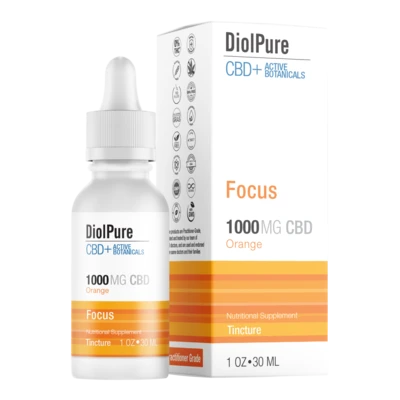Your Cart is Empty
Cannabinoids in possible treatment of MS
Cannabinoids in possible treatment of MS
August 26, 2022 - 3 min read
Multiple sclerosis is an autoimmune disorder, that expresses as damage, or ‘lesions’, in the myelin insulation sheathing around nerves in the brain and the spinal cord. Much research has been done on whether and how cannabinoids might be able to function in control of the disease. There is room for optimism. Recent findings in animal models suggest that therapeutic avenues do exist, in every component of the endocannabinoid system, a part of the body’s on-board cell signaling system of neural receptor sites, downstream enzymes, and transporter proteins.
Relief of symptoms in MS by cannabinoids is mediated mostly by activation of ‘CR1’, one of the two known receptor sites. There is neural protection in activating this site, by regulating glutamate homeostasis and excitotoxic damage. There is amelioration of spasticity as well, in raising endogenous levels of endocannabinoids through inhibition of AEA transporter proteins and the deactivating enzymes of AEA and/or of 2-AG, FAAH, and MAGL.
There is some activity at CR2 as well. Activation at this site in microglial cells upon inflammatory-induced nerve damage has been demonstrated in preclinical models of MS.
At both sites, as well, in astroglial cells, it is possible to enhance trophic and metabolic support to neurons that reduces excitotoxicity and affords neuroprotection.
From all of this, it is reasonable to think that the simultaneous modulation of multiple targets in the endocannabinoid system, combined with conventional therapies, and possibly acting synergistically, might prove to be beneficial in disease control.
Two candidate cannabinoids in this early research are cannabidiol (CBD), which attenuates symptoms in one experimental autoimmune encephalomyelitis model of MS, through induction of myeloid-derived suppressor cells, and VCE-003, a cannabigerol quinone, which alleviates neuroinflammation in one chronic model of MS.
Focus on spasticity:
There is evidence that nabiximols oromucosal spray may reduce subjective symptoms of spasticity. This is a THC/CBD formulation that has undergone four Phase III trials for this particular endpoint. Observational studies and registry data have subsequently confirmed the effectiveness and tolerability of this spray under everyday practice conditions. Data suggests that meaningful spasticity reduction is achieved during the first month, and that it remains or slightly increases over time.
These results do need to be taken cautiously. In a 2017 study, cannabinoids in multiple sclerosis were not found to reduce spasticity, and were judged likely to be associated with frequent adverse effects as well. Most trials support nabiximols as efficacious and generally well-tolerated, however, and of particular value to patients who respond poorly to conventional antispastic drugs. Assessment of efficacy is difficult to measure reliably, objectively, and validly. Future long-term studies will need to characterize neuropsychological processes involved in therapy.
Focus on disease progression:
Experimental studies into the biology of the endocannabinoid system do show that cannabinoids have neuroprotective activity, chiefly through CB1 receptor-mediated anti-inflammatory effects, that may slow disease progression and delay the onset of symptoms.
Treatment with WIN55,512-2, a potent CB1 (and CB2) agonist, has been reported to ameliorate tremor and spasticity in mice with chronic relapsing experimental autoimmune encephalomyelitis, and to delay disease progression.
Focus on possible new directions in therapeutics:
R(+)WIN55,212-2 Is a newly-discovered cannabinoid regulator of TLR3 signaling in IRF3 activation and IFN-beta expression, that may point the way to a new mechanism that could be explored for therapeutic value.
Another therapeutic avenue may be activation of receptors in the vanilloid system, a metabolic regulatory network that communicates with the endocannabinoid system. This has been suggested by early animal research with compounds like Rolipram, a phosphodiesterase-4 inhibitor, in which there seems to have been some reduction in neurological impairment in experimental autoimmune encephalomyelitis.
DiolPure products contain PureForm CBD™ transformed from aromatic terpenes for pharmaceutical-grade purity. PureForm CBD™ is bioidentical to CBD extracted from hemp and cannabis, but free of any residual cannabinoids like THC or impurities or chemicals that can associate with traditional plant-derived production processes.
The foregoing is a report on trends and developments in cannabinoid industry research. No product description herein is intended as a recommendation for diagnosis, treatment, cure or prevention of any disease or syndrome.


Beyond glaucoma: Cannabinoids in ophthalmology
Cannabinoids appear to have therapeutic potential in glaucoma. Beyond this, there may be further promise in ophthalmology.


The endocannabinoid system and bone disease
Stimulation of the endocannabinoid system modulates bone formation and bone resorption. There may be a role one day for targeted drugs in osteoporosis and some forms of bone cancer.


Sex differences, endocannabinoids, and pain
Sex differences in pain perception and analgesia is a burgeoning research field overall. What about cannabinoid analgesia specifically?
Follow us on Instagram



























